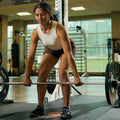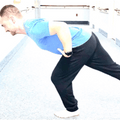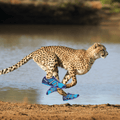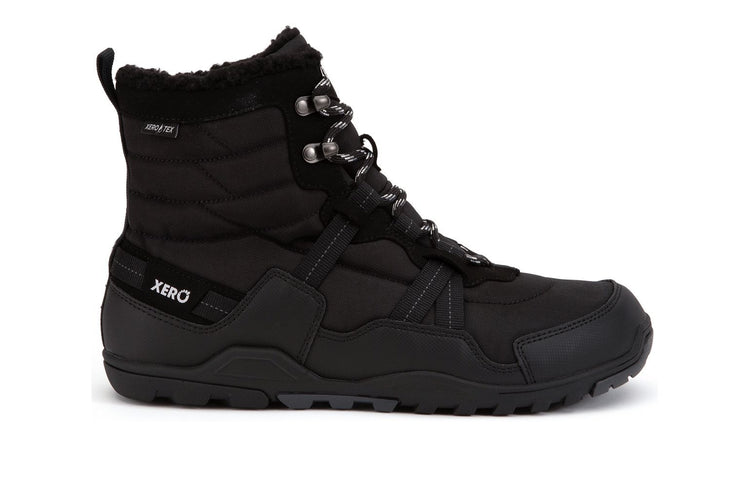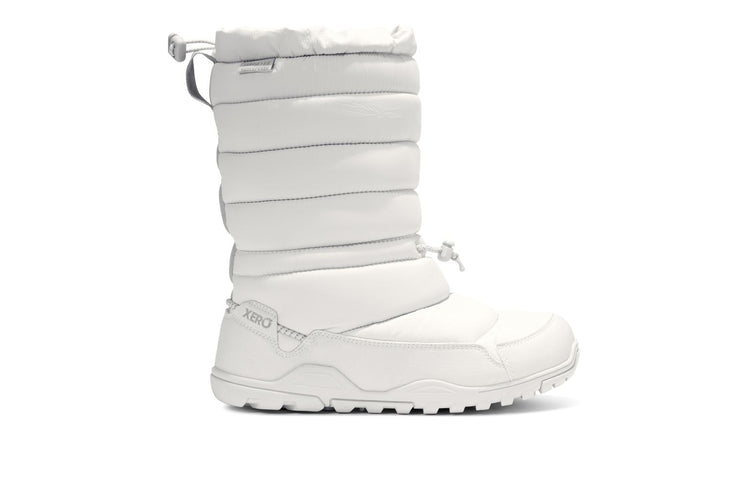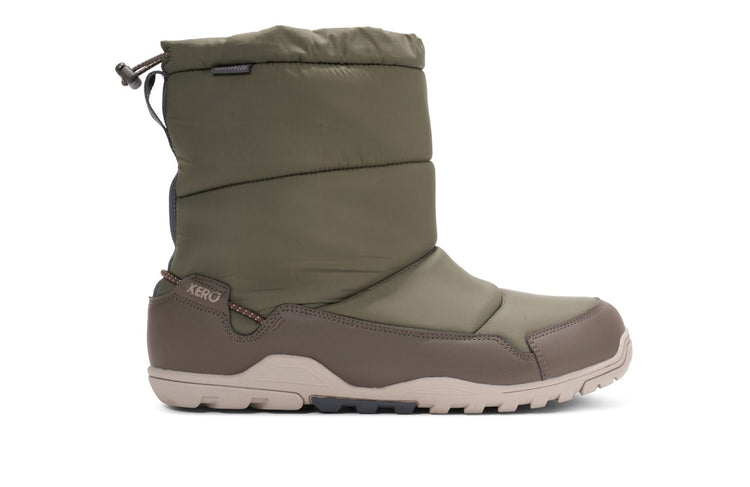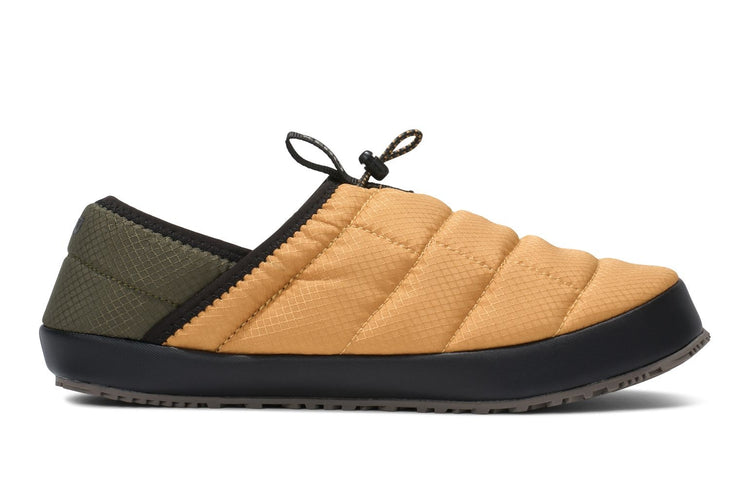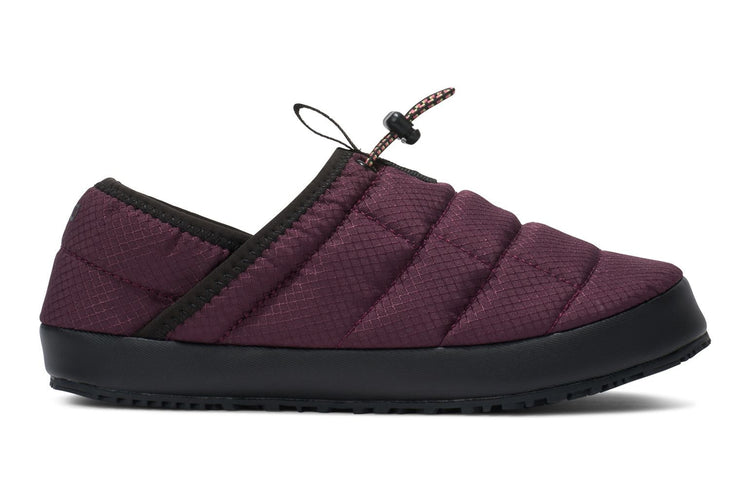latest News
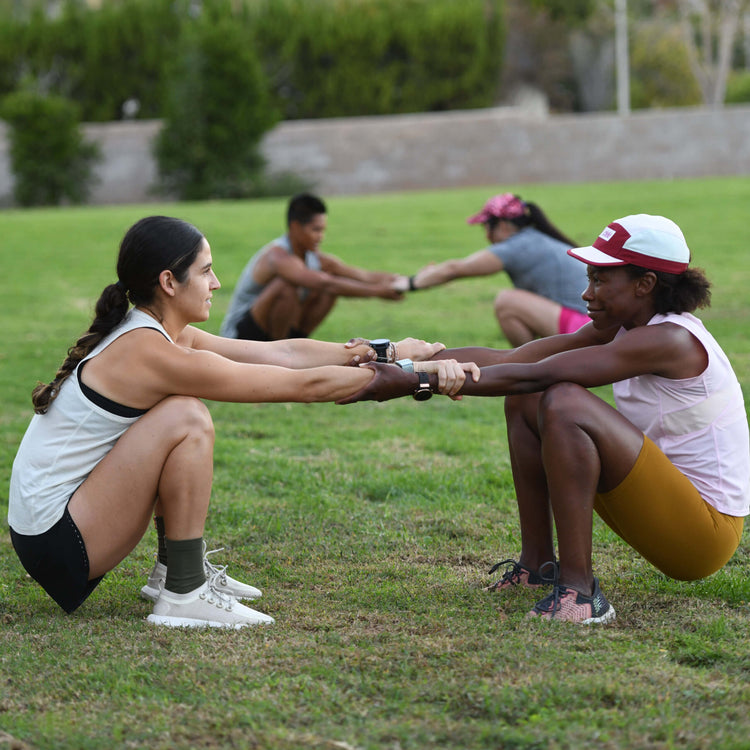
5 “MOVEMENT SNACKS” TO DO WITH A PARTNER
It’s time to rethink what a workout can be! Sure, there’s definitely still a time and place for a dedicated run, yoga class, or lifting session. But the movement in your life doesn’t have to (and shouldn’t) end there. Fill your life with purposeful, stimulating physicality, and it will pay off in ways you expect, and ways you can’t predict. You’ll perform better, think better, and simply feel better all day! The perfect place to start is with “movement snacks" (and Xero Shoes, of course.) What are movement snacks? “Movement snacks” are a groundbreaking training concept from Born to Run 2: The Ultimate Training Guide by Chris McDougall and Eric Orton, the follow-up to McDougall’s iconic best-seller Born to Run. These easy-to-learn exercises help engrain crucial human movement patterns on both physiological and neurological levels. Borrowing a page from McDougall’s limitless exercise manifesto Natural Born Heroes: Mastering the Lost Secrets of Strength and Endurance, they also require no equipment and can be done anytime, anywhere. Another great thing about snacks? You can do them on your own, but they’re even better with a partner! Here’s why. For one, adding someone else to your movement practice has been shown in research (and by countless real-life examples) to help all types of workouts be more effective. It helps people stay more motivated to keep coming back. It even enhances exercise's stress-reducing benefits. Basically, adding another person (or two, or a few) instantly makes everything that makes movement great even better! Here are three movement snacks that are group-friendly, fun, and suitable for all fitness levels! These exercises are excerpts with permission from Born to Run 2: The Ultimate Training Guide. Get your own copy of the Born to Run 2 book here. Xero Shoes For You and Your Partner Prio-Neo BUY HERE Forza Trainer BUY HERE 360 BUY HERE 1. Braced Deep Squat: Solo or With Partner "How to: Face your partner and grab each other's wrists. Support each other by pulling backward, easing down into a squat at the same time. Pause a few beats, then pull each other back up. How many: 10-12, with a focus on range of motion and controlled technique, rather than speed. Pay special attention to: Focus on getting as deep as you can, with good form, keeping feet facing straight forward. Improve through time. Purpose: Deep Squats can unlock your entire range of motion, everything from your neck to the soles of your feet, while loosening tight hips and Achilles and easing lower back tension" 2. Bear Crawls: Solo or With Partner How to: Start on all fours with your hands under your shoulders, knees under hips, and head in a comfortable position, eyes looking at least 1-2 feet ahead of you, ideally straight ahead. Press evenly onto your palms, tuck your toes under and lift your knees to hover just off the floor. Push onto your left toes and right hand, stepping forward with the left hand and right foot. Continue forward in a nice fluid motion. Keep the hips stable and avoid overly swaying form side to side. Repeat the same opposite arm-opposite leg pattern to move forward. Throughout your movement, keep your focus on easy breathing through the nose. How many: 20 steps (each time the right hand makes contact with the ground) to start, and build from there. Pay special attention to: Keeping the knees 2-3 inches off the floor. Work on keeping the hips stable and avoid shifting from side to side. Rest as needed. Purpose: Crawling builds full body strength and connects upper and lower body, as well as developing coordination. It's also a sneaky quad burn!" A movement snack from "Born To Run 2: The Ultimate Training Guide" Make it a fun partner workout by bear crawling towards each other and then shaking your partner's hand. Then proceed to bear crawl backward and repeat. 3. Side Lift: With Partner "How to: Balance barefoot on your right forefoot using a wall or chair or partner to help you stabilize. Keeping your right leg straight, raise your left leg sideways (think of half a pair of scissors opening). Raise your left leg only as high as you can while maintaining level hips, and then go back to the start position. Note: This is a stabilizing exercise for the stance leg, not a range-of-motion exercise for the moving leg. How many: 15-25 reps, then repeat with the opposite leg. 4. Knee Lift: With Partner How to: Balance barefoot on your right forefoot using a wall or chair or partner to help you stabilize. Keeping your right leg straight, raise your right heel slightly. Now, lift your knee in front of you as high as you can, and then go back to the start position. Keep your movements slow and controlled. The focus is on the stance leg, not the moving leg. Note: This is a stabilizing exercise for the stance leg, not a range-of-motion exercise for the moving leg. How many: 15-25 reps, then repeat with the opposite leg. 5. Quick Feet: With Partner How to: Facing a partner, raise your hands and place your palms against theirs. While maintaining palm-to-palm contact, the "lead" partner then tries to quickly step on the other person's toes. The following partner should dance away, doing everything possible to avoid foot contact while keeping palms connected. Switch How many: Just have fun with it and switch back and forth several times between leaders. Pay special attention to: Never breaking hand contact. Purpose: This is a fun group warm-up to get the heart rate up and simulate the central nervous system with some multidirectional, quick movement with the feet.
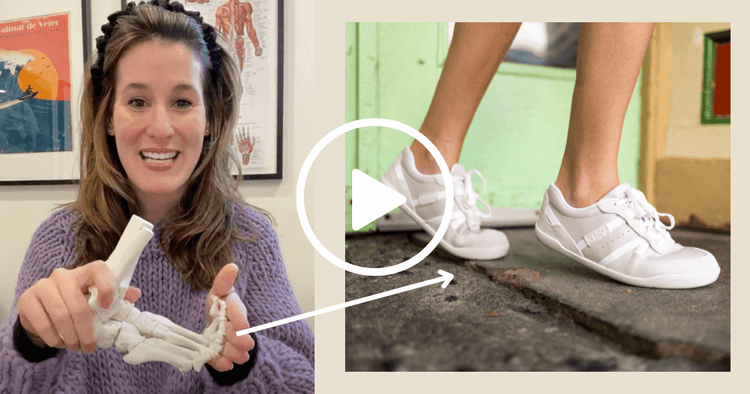
A Podiatrist Explains Why “Every Shoe Is A Walking Shoe”
It’s tempting to treat your shoe rack like a toolbox. For each situation, there’s a product in the $133 billion shoe industry to fit it, from workout shoes to hiking, running, and yes, even walking shoes! But do we need to have a specialized shoe for something as fundamental and human as walking? Massachusetts-based podiatrist Dr. Alissa Kuizinas isn't so sure. “We often have this perception that we need a special category of shoe to wear for walks,” she says. “There’s even a whole segment of footwear called ‘walking shoes,’ and there’s all kinds of technology involved in that. But every shoe can be a walking shoe, as long as it meets certain standards.” It took a long journey for this doctor to reach her current conclusions on walking shoes. Here’s how her personal experience led her to change her mind, and how she guides clients into finding the right shoe for their situation. “I knew there had to be a better solution” Dr. Kuizinas has more than a medical perspective on footwear. She struggled with foot discomfort for years, and found that she was repeatedly jamming her big toe inside her shoes with each step she took – “even with my ‘good shoes’ on,” she recalls. https://youtu.be/D_0iYRwKOaw “Traditional medicine would recommend that I wear custom orthotics, limit my activity and wear stiff-soled shoes until the pain becomes bad enough to require surgery,” she says. “I knew there had to be a better solution.” The deeper this foot doctor delved, the more she found that her feet weren't the problem. It was her shoes! “Even though shoe companies spend millions of dollars on technology and design development, the shoes they produce and sell are doing a major disservice to human feet,” she explains. “From cushioning, to heel-toe drops, stiff soles, to narrow toe boxes, nearly every aspect of a modern shoe has a negative impact on foot movement. It leads to an epidemic of dysfunctional, weak, and malfunctioning feet. And most of us aren’t even aware this is happening!” She finally found her fit once she started wearing anatomically designed, flexible shoes with little to no padding, like Xero Shoes. In a matter of months, she wasn’t just feeling better; she had changed dramatically her perspective on what a shoe should be! Get Out of the Way of Your Feet “The primary purpose of shoes is to protect our feet from the elements and from different surfaces,” Dr. Kuizinas says. “They’re for when we are out in the world walking on a slippery or wet surface. Ultimately, shoes are really there JUST for that purpose. They don’t need to be bulky and restrictive, or supporting our feet. Our feet are designed to support themselves!” So… why not just walk barefoot all the time? Research has actually supported this idea of slight “protection” being beneficial. A study comparing outdoor barefoot walking with minimalist footwear found that the shoes actually improved walking form in both younger and older adults, and reduced risk of falling. To maximize on these benefits, Dr. Kuizinas recommends a ‘as little shoe as possible’ approach to footwear, and instead focusing on building resilient, capable feet. “Rather than building up the shoe to try to externally support the foot and limit motion, minimalist shoes get out of the way of our feet,” she says. “They allow feet to function naturally, to move, and bend. The transition to minimalist shoes involves stripping down the unnecessary and harmful components of modern shoes so that feet can be feet again!” When working with clients today, Dr. Kuizinas shies away from the term “minimalist shoes.” Instead, she likes to call them “functional shoes” or “natural shoes.” “Natural footwear is really on the leading edge of shoe technology,” she says. “By stripping away the unnecessary and downright harmful features of shoes, we allow feet to function effortlessly as they were designed to!” How to Find Your “Functional” Walking Shoe Dr. Kuizinas has a three-point checklist of what she looks for in a functional shoe, which not-so-coincidentally match up with the three major functions of the human foot during walking. “The foot has three jobs: to be a ‘mobile adaptor’ or shock absorber when it first hits the ground, to be a rigid lever during push-off, and to be a sensor of the environment,” she explains. “As long as it can do these three things, it will function well.” Here’s how she says those functions should be reflected in the shoes you wear: Wide Toe Box: “Functional sneakers should have a wide, foot-shaped toe box. They’re broad enough to allow our big toe to sit in a proper alignment.” Flat & Flexible Soles: “Our feet contain 26 bones and 33 joints. And joints are designed to move! A flexible sole allows for natural foot movement. By contrast, stiff and rigid shoes with elevated heels prevent the joints from fully moving through their range of motion and limit the foot.” Minimal cushion and support: “A functional shoe should only be only as cushioned as you really need. Overly cushioned shoes dampen your perception of what's going on with your feet, and your ability to walk well.” If you follow those simple standards, Dr. Kuizinas says, every shoe can be a walking shoe! Be Patient and Build Up to Barefoot Both from her personal experience and in her professional practice, Dr. Kuiz recommends being patient when it comes to transitioning to full-time “functional” footwear. In the early days, she recommended a one-two approach of wearing functional shoes primarily for low-impact activities like walking and running errands, while also going barefoot around the house to help build resilience in the feet and ankles. “As your foot function improves, you’ll be able to tolerate less arch supportive shoes for greater amounts of time,” she explains. Xero Shoes That Fit Dr. Kuizinas' Standards Kelso BUY HERE Prio Suede BUY HERE Aptos BUY HERE Pheonix Leather BUY HERE Hana BUY HERE Mika BUY HERE Need help finding your perfect pair of shoes? TAKE THE SHOE FINDER QUIZ About Dr. Alissa Kuizinas Dr. Alissa Kuizinas is a virtual podiatrist with a passion for natural foot function. She helps people transform their feet by focusing on healthy footwear, movement patterns, and gait mechanics to get them moving at their absolute best.
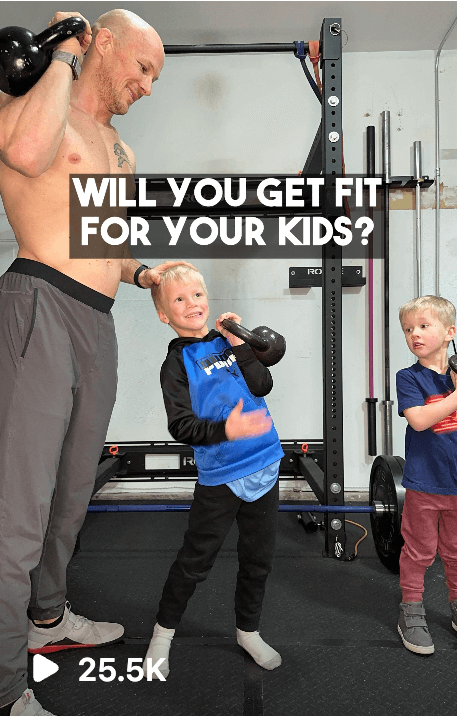
Simple Methods for Busy Dads to Stay Fit and Healthy With LivFitKarl
As a busy dad, you’ve a lot going on. Keeping up with work... spending time with your kids... helping around the house... working in the yard... Finding time to for health and fitness can feel tough, but it doesn’t have to be. Instagram influencer and Xero Shoes partner LivFitKarl has plenty of tips for doing effective workouts based on natural movement that don’t take up a lot of time. Even if you have just a few minutes at the beginning or end of the day, you can do an effective workout with minimal weight to increase your mobility, improve your stamina, gain more flexibility, and grow stronger—all things that will help you show up as your best for those important little people (or fully grown people) in your life. It all starts with making a commitment to being the fittest, healthiest version of yourself. And keeping what is most important front and center. Your fitness journey doesn’t have to be about how fast you can run or how much you can lift. It can be about keeping up with your kids and having the energy and stamina to pursue the things you enjoy. You also don’t need a lot of equipment or a dedicated space. Even on vacation, if you can find a few minutes, you can keep up your progress toward your fitness goals. And remember, even little choices like wearing barefoot shoes to walk around town, can help you reach your health and fitness goals faster. Training in barefoot shoes gives you access to natural movement, which may help you make the gains you’re after. Karl’s Favorite Xero Shoes https://xeroshoes.com/wp-content/uploads/2023/01/Video-5.mov For Summer Barbeques and Casual Nights Out Dillon BUY HERE Dillon Canvas Slip-On BUY HERE Kelso BUY HERE Go-To Every Day Shoes Prio Neo BUY HERE Nexus Knit BUY HERE For Workouts Speed Force II BUY HERE Forza Trainer BUY HERE
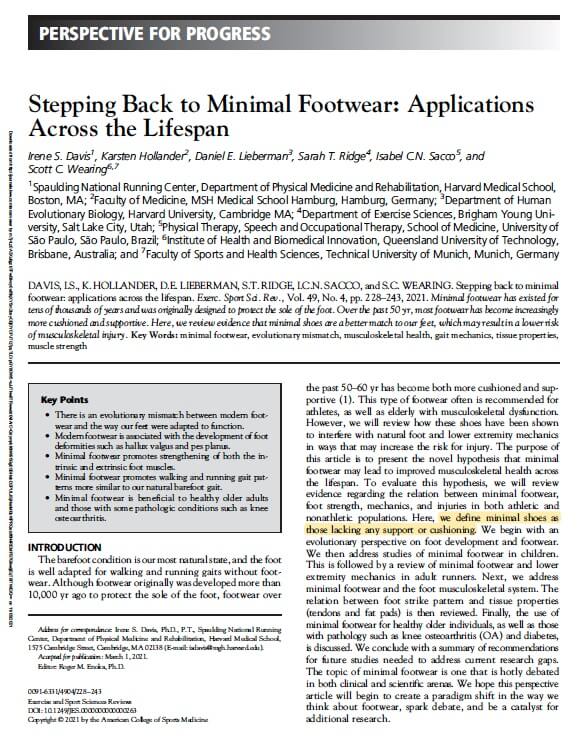
Minimalist and Barefoot Shoes - a scientific overview
When I talk about natural movement and the footwear that does, or doesn't, support it, I'm often asked "Where's your proof?" In fact, if you look at the comments on many of the videos I've made that show how padded, stiff, thick, motion-control, elevated heel shoes with pointy toe boxes don't allow the foot to move naturally, you'll hear from people who agree that each of those characteristics can be bad. I've even had employees of "Big Shoe" companies concede that their products don't allow the foot to move the way, well, feet are meant to move. But then when I show how the design of a truly minimalist shoe, like Xero Shoes, can allow for natural movement which can be beneficial, some of those same people think I'm merely spouting an opinion and not synopsizing a LOT of research. So, if you're one of those people who wants "the proof," I can't think of a better starting point than this paper, published by the American College of Sports Medicine: Stepping Back to Minimal Footwear_Applications Across the Lifespan (clicking the link opens the paper in a new tab). Read the paper, of course, but if you want to have fun, look at the notes so you can see the amount of research that backs up the paper. And if you want to have REAL fun, search for and read the papers listed in the notes. I often call some of that research "The Dumbest Science Ever Done." I'm being deliberately tongue-in-cheek when I use that phrase, but I use it to get people to think about why those of us who promote natural movement need to do serious scientific research to demonstrate something as obvious as "use it or lose it." We all know that if you DON'T USE your muscles, ligaments, and tendons, you LOSE strength, flexibility, function. And, equally, we all know that the way you build strength, flexibility, balance, mobility, and agility is by USING your body. Anyway, enjoy the paper, and leave your thoughts about it in the comments, below...
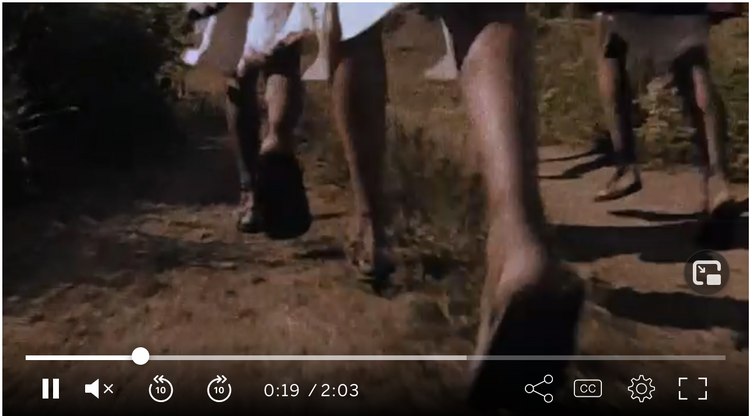
"The Infinite Race" - A meta-review about the 30-by-30 Documentary
The new 30-by-30 documentary, "The Infinite Race" about the Tarahumara premieres on December 15th.Outside magazine reviewed the movie and here's a review of the review... which is important to understand to, well, understand the movie.I'll be reviewing the movie, too, but this "meta-analysis" might put things into context for you.I'm not completely debunking the "debunking" that this review says the movie does... and, in fact, even the review doesn't do so, despite the claim of the headline.Find out more, I think you'll think it's interesting.One thing I didn't mention in my review: Why now? Born to Run came out 11+ years ago. The "barefoot boom" has, according to many, faded. So why is this important now?Not to suggest questions of cultural appropriation or that the unintended consequences of publicity might be worse than the benefits of that publicity. But the review suggest that the movie is attacking some "straw men" rather than addressing some of the bigger, more valuable questions.I'm looking forward to seeing the film to find out for myself and I hope you do the same.We were inspired by Born To Run and the Tarahumara and, happily, have donated a % of our revenue to support the Tarahumara through the Tarahumara Childrens Hospital Fund -- www.tchforegon.orgWhat do you think? Leave a comment, below.
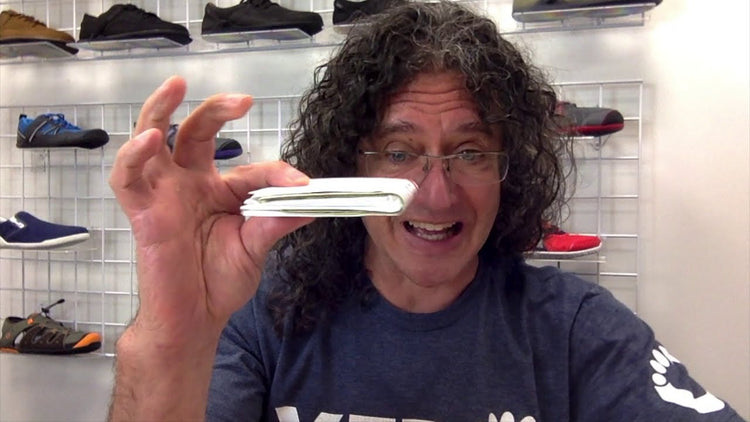
Make your own Tyvek Envelope Wallet - Free Plans Inside
The video below shows you how to make your own Tyvek® wallet envelope in just a few minutes. Or download these FREE PLANS for The ULTIMATE DIY Minimalist Tyvek Envelope WalletWe can't wait to see your creation. A minimalist wallet to match your minimalist Xero Shoes ;-)
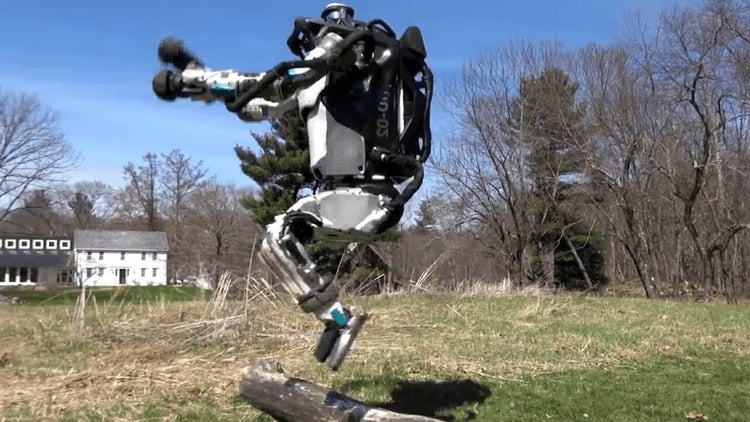
Running Form - learning from robots, kids, and ice
Physics. It's not just a good idea, it's the law.Want to improve your running technique?I have three suggestions: Watch robots run Watch little kids run Learn to run on ice! Running RobotsThe gang at Boston Dynamics are creating robots that do AMAZING things. For one, check out this one:Oh, sure, it's not going to win any races, but what do you notice about its running form?Look at where the foot lands in relation to the body.Is it reaching out in front of the body ("overstriding")? Nope.It's landing, basically, with the foot under the center of mass.This is the most important thing to emulate.You may also notice that this robot contacts the ground with its forefoot first. It doesn't land heel-first. It doesn't land flat footed.Research from Harvard's Dr. Irene Davis suggests that this is the optimal way for humans to land also. Why? Because you're putting the foot and ankle in the optimal position to give you strength, structure, and shock absorption.You know who else runs like this?KIDS!Especially kids who haven't spent much (or any) time in shoes.Take a look at this video. Especially the youngest, littlest kids at the back. Not every stride is perfect (nor should it be... they are, after all, on a non-flat surface), but you'll see that they're landing much like the way the robot does.Forefoot first. Foot under their center of mass.And, perhaps more importantly, it looks like they're having FUN!I also love when the littlest one stops for a few moments because he's "done," then starts again when he's ready to go.Running on Ice!I'm often asked how to run/walk/hike without slipping.Actually, what I'm asked is "Can you make a shoe or sandal that's totally slip resistant?"In short, No.Like I said at the start of this post: Physics is the law.There is no material that can prevent slipping under all conditions.Even the materials that help have limitations and trade-offs. For example, typically, the grippier the sole, the faster it wears out.But you can prevent slipping almost regardless of the sole's composition, or even the surface you're on.How?By doing the same thing that robots and little kids do: Land with your foot UNDER your center of mass (or as close as you can get).One demonstration of this is running on ice.Check out these two videos:In the first video, the runner builds to his full speed on carpet, then holds that speed on ice. In the second, the runner is even able to build speed with proper foot placement.This works because landing with your foot under your body reduces horizontal forces enough to eliminate slipping.A word about slipping in sandalsSometimes people will tell me that their sandal doesn't slip, but their foot slips across the sandal.This is caused by the same issue -- landing with your foot too far away from your body.In that case, the sandal hits the ground and stops while your foot is continuing to move.Landing with your foot under your body, like our kids, robots, and ice-runners, will take care of this, too. Let me know what you discover as you become a child-like robot on ice!
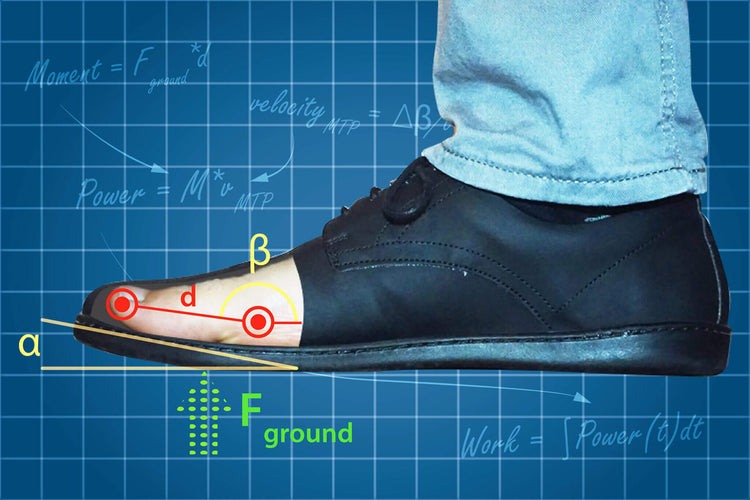
NEW research - Shoes can make you weak and injured
It's time for another episode of "stupid research."Not that the research itself is stupid.But that those of us who understand the value and benefits of natural movement, and how most "normal" shoes get in the way of letting your feet do what's natural, are stunned that people need research to prove something obvious:Using your body naturally is better than restricting it.In this episode, Harvard's Dr. Daniel Lieberman, whose research showing about how barefoot runners put less force through their joints than runners in shoes kicked off the barefoot running boom in 2009, just published a new study about footwear.And the results are not good for "normal" shoes.In this study published in Nature and described on the Harvard website and Lieberman and others examined the effect of "toe spring."Toe spring is the upward curve in a shoe, from the ball of the foot to the tip, that's built into modern athletic shoes and many dress shoes as well.Shoe designers add toe spring to stiff-soled shoes to accommodate the fact that the sole prevents your toes from bending towards your knee as your foot is about to push off the ground.So, what did they discover?In short:By limiting the amount of movement in the foot, the foot gets weaker: “It stands to reason that if the foot muscles have to do less work, then they’re probably going to have less endurance given that many thousands of times a day you push off on your toes,” said Lieberman, the Edwin M. Lerner II Professor of Biological Science and senior author on the paper. The work on toe springs is described in Scientific Reports. The researchers say this potential weakness could make people more susceptible to medical conditions like plantar fasciitis — a common, hard to repair, and painful inflammation of the thick, web-like band of tissue that connects the heel bone to the toes. And this limitation could lead to injuries and medical problems: The researchers say this potential weakness could make people more susceptible to medical conditions like plantar fasciitis — a common, hard to repair, and painful inflammation of the thick, web-like band of tissue that connects the heel bone to the toes. “One of the biggest problems in the world today of people’s feet is plantar fasciitis,” Lieberman said. “We think that what happens is that people are relying on their plantar fascia to do what muscles normally do. When you get weak muscles and the plantar fascia has to do more work, it’s not really evolved for that and so it gets inflamed.”
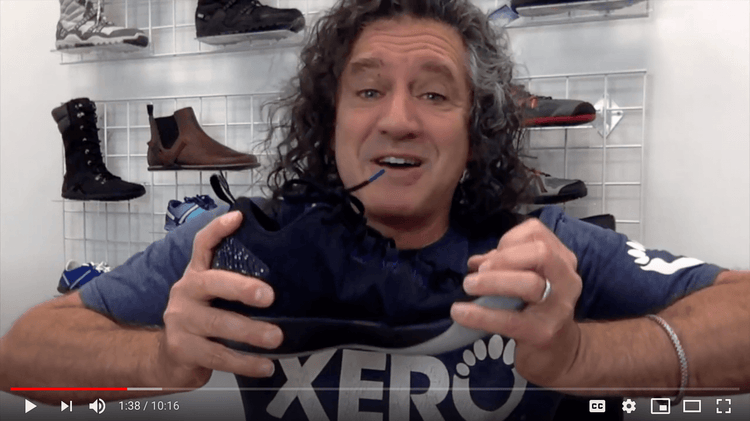
How to find TRULY comfortable shoes
The secret to finding comfortable shoes...It's probably not what you think.And it's definitely not what "Big Shoe" companies have been saying for the last 50 years.It's not because you need more arch support or better cushioning or to control your pronation or supination.The secret is actually what humans have been doing for ages.The secret to TRUE comfort is letting your feet do what's NATURAL.Think about this -- did you know 1/4 of the bones and joints of your ENTIRE body are in your feet and ankles?Did you know you have more nerve endings in your soles than anywhere but your fingertips or lips?CLEARLY, you're supposed to USE those things at the end of your legs.Your feet are made to bend and flex and move and FEEL the world (you'll want to do that safely, and I'll show you how).And it gets worse >> When your feet can't do their job, that function of helping you move and balance tries - UNSUCCESSFULLY -- to move "upstream" into your ankle, your knee, your hip, and your back.You want to let your feet do their job, so the rest of your body can do its job.But most shoes do the opposite of what's natural -- they squeeze your toes together, they elevate your heel (which messes with your posture), they insulate you from the ground so your brain can't tell what's going on with your feet (which means it doesn't have the info it needs to help you move your body efficiently and enjoyably).And NO amount of cushioning protects you from the impact of walking or running, or even just standing.ANOTHER QUESTION -- Remember being a kid on a warm summer day and going outside, kicking off your shoes, and feeling the grass between your toes, or the sand under your feet, or the water around your ankles?Remember how much fun it was to PLAY... until it got so dark your parents had to drag you home, even though you couldn't see your hand in front of your face or the ball you were trying to kick or hit?You can have that feeling of fun and freedom NOW... at any age.It comes from letting your feet do what's natural.Now, I'm NOT suggesting you run around barefoot like some aging hippy (I know that's what I look like, but my wife said she'd leave me if I cut my hair!)Once my wife and I discovered the fun and the benefits of natural movement, we started Xero Shoes to make footwear that LETS YOUR FEET BE FEET: - Natural Fit -- wide toe boxes let your toes spread and relax. A non-elevated (zero-drop) heel for proper posture. - Natural Motion -- super flexible to let your feet bend and move naturally. Low-to-the-ground for balance and agility. - Natural Feel -- the patented FeelTrue® soles give you just-right protection while still giving the ground feedback your brain needs for efficient, natural movement. All our casual and performance shoes, boots and sandals are super lightweight. They're made for almost any activity you do -- walk, run, hike, workout, do yoga or CrossFit, or even just stand on your feet all day for work.They're so comfortable that at the end of the day you may forget to take them off!We've had people email us to say, "I got into bed and then realized I was still wearing my Xero Shoes!"Plus they're affordable and so durable that they have a 5,000 mile sole warranty.Oh, and yes, we WERE on Shark Tank ;-)We've helped hundreds of thousands of people discover the fun, comfort, and benefits of natural movement and we hope you decide to do the same.Go to https://xeroshoes.com/shop/ to see which styles have your name on them. Check out the reviews (over 17,353 5-star reviews!), and get ready to Live Life Feet First!(And if you have any questions, our Customer Happiness Team is available to help -- 303.447.3100 or support@xeroshoes.com)
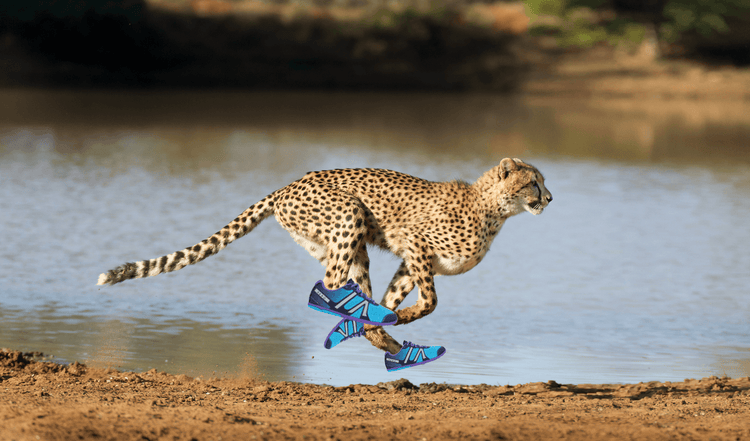
Spot Xero Shoes During Your Next Safari!
Introducing the Front Runner, the first shoe designed to improve the health and performance of rehabilitating cheetahs.The design idea came from New York City Zoologist, Dr. Lex Rodriguez, after noticing that when cheetahs were released back into the wild, the paws of these magnificent cats were not able to handle sticker burrs, hot gravel, sharp rocks, and even the friction they develop by running at over 60 miles per hour.Says Dr. Rodriguez, "I've worn Xero Shoes for years and it occurred to me that the protection, and ground feel you get from these shoes, could be effective for helping these animals transition back to their natural habitat.When he was approached for this project, Xero Shoes CEO was instantly interested."I've been a competitive sprinter since I was a kid," says Sashen. "So it's not surprising that cheetahs are my favorite animal."The Xero Shoes team took their top-selling running shoe, the HFS, and quickly adapted it for feline feet.Both Xero and Dr. Rodriguez were initially skeptical about how the animals would adapt to wearing footwear."We've all seen how domestic cats behave when they step on tape," Sashen said. "They walk around trying to shake it off. We thought the big cats might react the same way."Dr. Rodriquez was more than pleasantly surprised by the initial results. “It’s amazing. They adapted almost instantly. It’s like they don’t even notice or feel anything different, but their performance tells a different story.”Over the last 7 months, the Front Runner was tested on 3 cheetahs of different ages that were preparing for reintegration back into the wild.Reports Dr. Rodriguez, "Wearing the shoes prevented their pads from becoming raw, so they were able to run longer, but they still have the same excellent balance and agility, and their toes can still flex and bend naturally."Most surprising, the cheetahs increased their top speeds by 6%.The zoological research team is still investigating how the performance improvement happens, but the current theory is that the dual-chevron tread gives great traction, without the energy loss that occurs when claws have to dig into the ground.Xero made one significant change between the running shoes they sell online—the Prio, Speed Force, and HFS—they added "Prey Slots" in the FeelTrue rubber soles to allow the cheetah's claws to work naturally when the animal catches prey."There's no value being faster," says Dr. Rodriguez, "if, once you catch up to your prey, you can't, well, finish the job."With just the right amount of protection, the Front Runner should enhance the cheetah's ability to effectively hunt no matter what the elements, keeping the population of prey animals in check and ultimately—helping plant-life by preventing overgrazing.Based on these results, Xero has been approached to develop performance-enhancing footwear for other animals, speedsters and otherwise, including those raised in the wild.Says Sashen, furtively, "I'm not supposed to talk about our 'skunkworks' projects, but we're working on shoes for ostriches, orangutans, and ferrets." Preliminary results are expected by this same date next year.
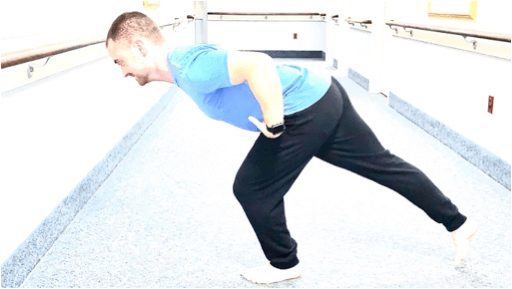
How to Perfect Your Balance
Have you always thought that you just aren't someone with good balance and that's that? Think again. It is totally possible to improve your balance! So how do you do it? Just like a weightlifter needs to lift progressively heavier weights to get stronger, if you want to improve your balance, you need to challenge your balance by placing yourself in unstable positions. In doing so, your body will develop the reflexes needed to maintain balance in that unstable state. This means that you need to be doing exercises that make you wobble...for if you are not wobbling, you are not being challenged. In time, a given activity that once made you wobble, will soon become easy and so you will need to move on to a more difficult activity.Safety first: If you’re concerned that you might fall during a balance exercise, always keep your hand close to some type of support like a sink, counter, or sturdy chair. However, when performing the exercises, you should keep your hands just above your security support and only use them when you feel like you may fall. By having your hands just above the support, you will not rely on your hands to steady yourself and instead will use the balance reflexes found in your feet, legs, and torso. So, let's begin. For an extensive list of balance exercises I regularly use as a physical therapist for patients, head to https://programs.perfectingmovement.net/catalogIf those exercises are either too easy or too difficult for you, all balance exercises can be made more difficult by reducing the amount of visual input you are receiving. This can be done by performing the activity in a darkened room, with eyes squinted, or with eyes closed. In this way, it will limit the amount of visual input your brain receives and so will force you to rely more on your other systems for sensory input.Exercises can also be progressed/modified by standing on an unstable surface such as a foam pad, BOSU ball, wobble board or even a slack line, all of which of course will make you wobble more. As always, anytime you are wobbling, you are challenging yourself and are actively in the process of making your balance better!In this program, I have balance exercises for people of all ages ranging from high-level athletes to geriatrics.So, are balance exercises for athletes too??Absah-freakin-lutely...having good balance as an athlete is crucial toward preventing injuries. This is because good balance is essentially having good neuromuscular control. Without good neuromuscular control, one loses control during movement, and so is at a much higher risk of getting injured. Think about it: Running, cutting, sprinting, braking: all of this happens on one leg at a time. Therefore it is essential to have good neuromuscular control on one leg; ie good balance. Squats and deadlifts are great exercises, but they won’t improve your control/balance on one leg needed for activities like sprinting, cutting, running, and pivoting. Therefore, awesome single balance = not getting hurt = being a real winner.Footwear which can immediately create better balance:When using a thinner, flatter shoe with a wide toe box, one typically has better balance. This type of footwear is called “minimalist”, or “barefoot” footwear. Xero Shoes are definitely my preferred minimalist shoe brand.Here are some of the characteristics and benefits of a minimalist footwear: A wide toe box which allows the toes to splay, creating a wider base of support. A flat sole without support which does not throw off the natural positioning of the foot and ankle. A thin sole which places one’s center of gravity lower to the ground to create improved stability. A thin sole which also allows one to feel the ground more easily. In this way the brain has faster and more descript sensory input needed to create more rapid and effective balance reflexes. In contrast, most traditional shoes have thicker soles, motion limiting “support”, narrow toe boxes, and elevated heels. All of this will disrupt the body’s natural sensory and reactive needed to maintain balance.As a physical therapist, I have had AMAZING success in getting my patients in a minimalist footwear for both reducing pain and improving balance. Once my patients start using minimalist footwear, it is extremely common that they report feeling more balanced and more confident on their feet.Lastly, it is essential that one learns how to walk with proper technique in order to prevent a loss of balance, slip, or a rolling of the ankle. This is because walking with good technique places the foot more beneath the center of mass so that you have better control. Often people take an excessively long stride where the foot is too far forward from the center of mass. The further the foot is away, the less control you have and so are at higher risk of injury. As a guy who used to constantly sprain his ankle, I no longer do so. What changed? I almost exclusively use minimalist shoes and have improved my walking and running techniques. Here is a great video resource to learn how to walk the right way from PerfectingMovement.Net.– James O’Brien MSPT, OCS, CSCS, from PerfectingMovement.netThe content of this post does not constitute and is not intended to be a substitute for professional medical advice, diagnosis or treatment. Always seek the advice of a physician or other qualified health provider with any questions or concerns you may have about your health or a medical condition.
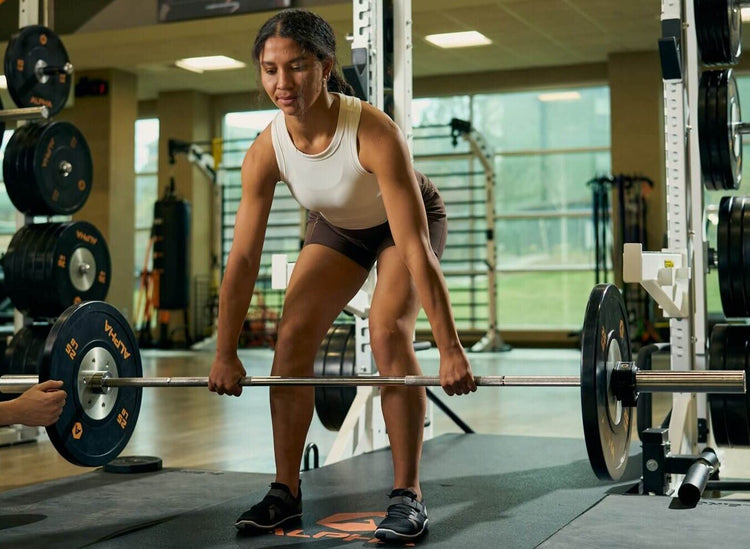
Barefoot Shoes for Weightlifting & Strength Training
By Allison GoldesteinThink about the last time you went to the gym to lift weights. You likely planned your outfit in advance. (How much will I be sweating? How good do I want to look? What’s actually clean?). But when was that last time you thought about the best shoes to wear for your workout?Unless you are a competitive weightlifter, you probably did not think much about your footwear. You just wore your sneakers, right? The shoes you wear to lift weights may also be the ones you wear to run, elliptical, play basketball, soccer, volleyball, or anything else.If those same shoes are your gym shoes, you’re compromising your strength workout and the gains you could get.Why Do Some Weightlifters Workout Barefoot?When you swing a kettlebell, snatch a barbell, or lift a dumbbell, it feels like you’re just using muscles to pull upward, against gravity. What most people forget, however, is that when you do these exercises, you’re also pushing down with your feet, into the earth.That downward force, which meets the ground at the soles of your feet, is the foundation of your exercise, so if you want to reap the most benefit from lifting weights—enlisting all the correct muscles and generating the most force to lift the heaviest weight that you can—that foundation has to be stable.For stability, you need three things: A wide base (have your toes spread) Sensation (i.e., you need to be able to feel the ground and how your feet interact with it) Muscular control and strength (which starts with your brain feeling that sensation Think about how difficult it is to walk on stilts, or even platform shoes (sorry ladies)—it’s hard because your feet are so far off the ground. You don’t get as much feedback from the proprioceptors—a fancy word for a type of neuron—in your soles, and you can’t enlist as many intrinsic foot muscles as you would if your feet were flat on the ground, especially if the sole is stiff.The same goes for wearing shoes with lots of cushioning: your foot is farther off the ground, which is less stable, you can’t feel the ground effectively, and the foam absorbs some (or much) of the force that you want to put directly into the ground.If you want the best experience of stability, feedback, and wide stance, and direct force application, you’ll want to try barefoot lifting—your feet can’t get any closer to the ground than that! However, most gyms won’t allow you to walk around barefoot, and you might not want to, given the risk of stepping on something sharp. Is It Better To Workout Barefoot Or In Shoes? Many people assume that wearing shoes is an absolute must when working out, but the truth is that exercising barefoot can also be effective. In fact, some professional lifters don’t even wear shoes during their workouts. So why do some lifters workout barefoot? Powerlifters say, “strength begins with the feet”, even for bench presses. Barefoot training can offer you: Better balance and stability. Shoes can create an unstable base for your lifts as the padding and elevated heel can shift your weight distribution. By lifting barefoot, your feet make direct contact with the ground, allowing your body to adjust accordingly. Improved proprioception. This refers to your body’s ability to sense and understand its position in space. When your feet make direct contact with the ground, your body can better make use of its sensory feedback. Better form. When lifting barefoot, your feet and toes can better grip the ground and maintain balance, which translates into better technique. Reduce pressure. Your feet have natural shock absorption in them. By weightlifting in bare feet, your body can better make use of this in order to reduce the pressure on your knees and ankles. Strengthen foot muscles. Lifting barefoot allows you to use the muscles in your feet and toes to actively stabilize your body. Over time, this will strengthen the muscles in your feet. If you want to experience these benefits, but don’t want to go completely barefoot (or your gym won’t let you), you can try lifting weights in barefoot shoes. These shoes allow you to get as close to being barefoot as possible while still having a layer of protection on your feet.Barefoot Shoes for WeightliftingWearing barefoot shoes with zero-drop for weightlifting is the closest experience to going barefoot that you can get. The term “zero drop” means that the shoe’s heel-to-toe drop is zero millimeters. Your heel is level with the rest of your foot, unlike the forward tilt you get in traditional running shoes that have elevated heelsAnother benefit of barefoot shoes for weightlifting is building foot strength. Strong feet give you a better base, something that can help with any lift where your feet are on the ground.Research shows that merely walking in minimalist shoes builds foot strength as much as doing a foot exercise program.The thin sole of Xero Shoes is designed with a zero-drop sole which allows your feet to be low to the ground. We have several barefoot shoes for weightlifting including Prio, Prio Neo, 360, Forza Trainer.The shoe’s wide toe box also lets your toes spread out, which adds stability, since it gives you a wider base. This is a lightweight shoe – when weightlifting, you’ll barely notice you have them on.Don’t just take our word for it. Here’s what some weightlifters have to say about their experience with barefoot shoes:Tips For Transitioning To Barefoot ExerciseWhether you are taking the plunge into going completely barefoot or switching to barefoot weightlifting shoes, here are some tips to get you started: If you’ve never worn minimalist shoes before, you’ll want to introduce them the way you would any new exercise or gear—slowly. Practice foot strength exercises. Those little muscles in your feet that are used to slacking off will need time to acclimate and strengthen. A 2019 study by Dr. Sarah Ridge found that walking in minimalist shoes strengthens the muscles in your feet as much as following a foot strengthening exercise program. As your feet and muscles get stronger, slowly increase the duration and intensity of your workouts. Add new exercises and movements slowly to avoid overexertion. Listen to your body and rest when needed. Don't push yourself too hard too quickly or ignore any discomfort. When you start heavy lifting with barefoot shoes, try using a removable insole so you can decide just how close to the ground you want to be. Be patient on your barefoot training journey. Being patient can be difficult, but your body will thank you. In the long run, making the switch in your weightlifting routine will pay off. The content of this post does not constitute and is not intended to be a substitute for professional medical advice, diagnosis or treatment. Always seek the advice of a physician or other qualified health provider with any questions or concerns you may have about your health or a medical condition.Barefoot Shoes for LiftingXero Shoes has several models for barefoot weightlifting. Try the Prio, Prio Neo, 360, Forza Trainer model for weightlifting or strength training - available in many sizes and colors.


